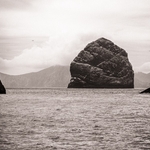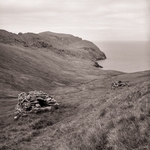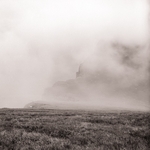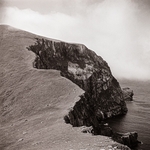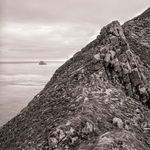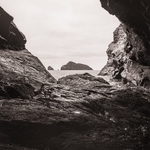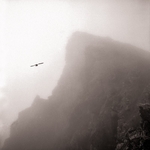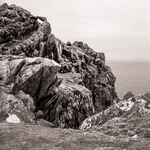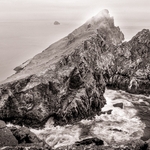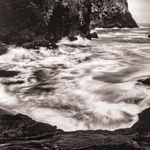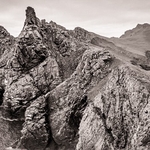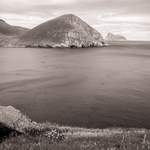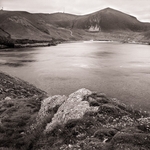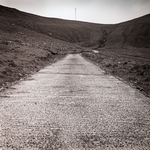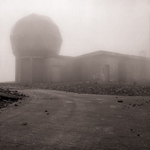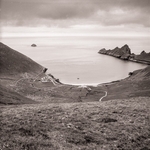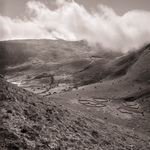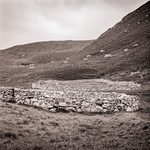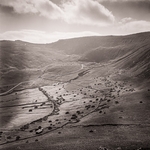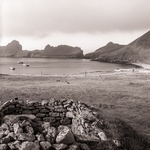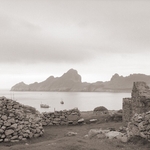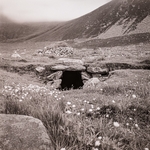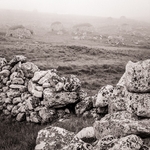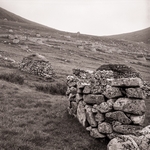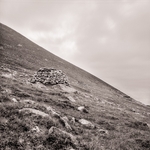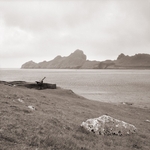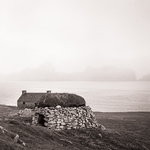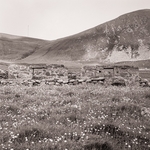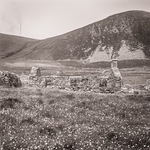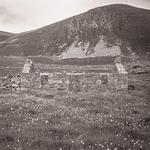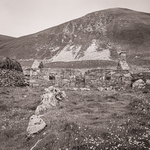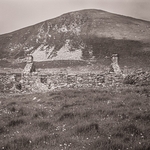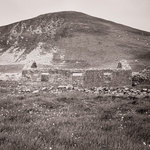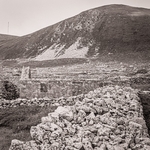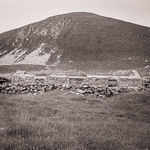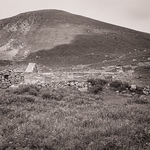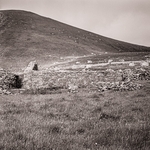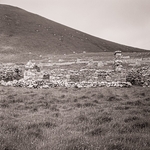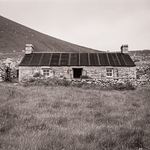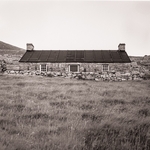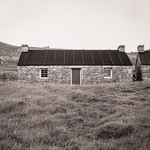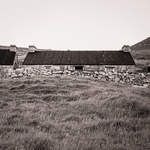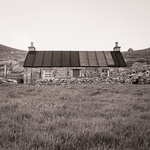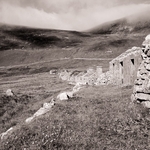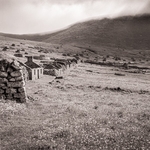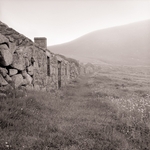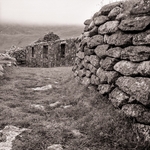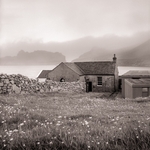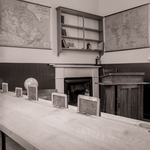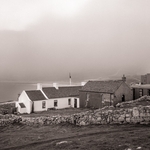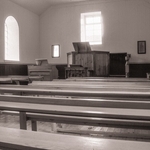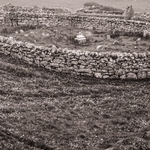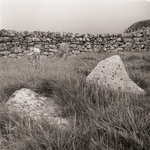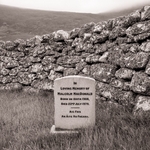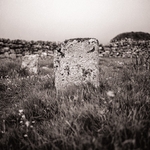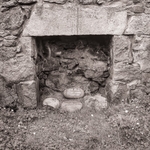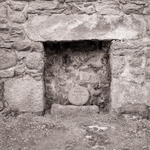Exhibition 2020 - The Last Isles, Photographs of St Kilda
On 29th August 1930, the remaining 36 members of the community on Hirta, the main island in the St. Kilda archipelago were evacuated at their own request.
On 2nd July 1989 I stepped ashore onto the quay in Village Bay as a member of a National Trust for Scotland Work Party.
29th August 2020 is the 90th anniversary of the evacuation and this is a collection of photographs from the two weeks I spent on the island. Photographs of an extraordinary landscape and a tribute to the people that struggled to make a living from and a home on, the island.
The most isolated of the Scottish Hebridean islands, the archipelago of St Kilda lies some 110 miles west of the Scottish mainland. Its remoteness, spectacular rock scenery, outstanding bird life and poignant history contribute to its unique attraction.
Man was probably present on St Kilda in Viking times about one thousand years ago. It is likely that the islands were occupied continuously from the Middle Ages until 1930. The plan of the main street is unique in the west coast of Scotland, and all the structures within the village are Scheduled Ancient Monuments and therefore protected.
The group consists of Hirta, the main island; Soay, the sheep island; Boreray, the gannets isle; and Dun, a natural craggy breakwater for Hirta’s village bay and one of Britain’s largest Puffin colonies. The National Trust for Scotland has leased the islands to the Nature Conservancy Council who have designated them a National Nature Reserve.
St Kilda is Britain's premier sea-bird breeding site. It is home to Gannets, Fulmars, Manx Shearwaters, Leach’s Fork-tailed Petrels, Guillemots, Razorbills, Puffins and Kittiwakes.
The importance of St Kilda is recognised by UNESCO and the islands are Scotland’s and the UK’s only place to be given Dual World Heritage status for its cultural and natural qualities.
The Archipelago is full of superlatives. Home to one of the largest gannetries in the world; the highest sea cliffs and the highest sea stacks in Britain; It also has its own sub-species of Wren and Field mouse and a hardy population of Soay sheep.
The St Kildans unique way of life, based on the sea-birds of the islands, continued almost unaltered well into the 20th century. A significant feature of St Kildan life was the diet. The islanders kept sheep and a few cattle and were able to grow a limited amount of food crops, such as barley and potatoes. They generally eschewed fishing because of the heavy seas and unpredictable weather. The mainstay of their food supplies was the profusion of seabirds, especially Gannets and Fulmars, harvested by being lowered down the sheer sea cliffs on ropes. These they collected as eggs and young birds and ate both fresh and cured. Adult puffins were also caught by the use of fowling rods. These fowling activities involved considerable skills in climbing, especially on the precipitous sea stacks.
Communication was extremely difficult, being limited to yearly visits by the Lairds Factor; visits by passing trawlers or the ‘St Kilda Mailboat’ which comprised a piece of wood in the shape of a boat, attached to a bladder made of sheepskin, and placed in it a small bottle or tin containing a message. Launched when the wind came from the north-west, two-thirds of the messages were later found on the west coast of Scotland or, less conveniently, in Norway.
Whatever the privations, the St Kildans were fortunate in some respects, for their isolation spared them some of the evils of life elsewhere. It was noted in 1697 that the citizens seemed "happier than the generality of mankind as being almost the only people in the world who feel the sweetness of true liberty". In the 19th century, their good health and well being was contrasted favourably with conditions elsewhere in the Hebrides. Theirs was not a utopian society however, and life was extremely hard.
Between 1956 and 1958, The National Trust for Scotland was influential in conserving the buildings and structures in Village Bay. The Trust successfully prevented the destruction of all these structures by the Ministry of Defence who planned to use the buildings for use as road base and foundations for the MOD buildings of the missile tracking station for the firing range on Benbecula. Trust activity on the island is greatly aided by the presence there of the MOD’s defence contractors QinetiQ.
Since the 1960’s, parties of volunteers have visited St Kilda to repair and restore the ancient cottages, cleits (a primitive type of air-drying larder), church and dykes and also to carry out archaeological work. The efforts of the work parties over the years have consolidated all the ruined houses in the Village Street and restored six cottages, one of which is now a museum and another restored to its appearance at the time of the evacuation.
Rachel Johnson (nee Gillies) was just 8 years old at the time of the evacuation and was the last native St Kildan to pass away in April 2016.
Quotations are from 'St Kilda Portraits' by David A. Quine



On 2nd July 1989 I stepped ashore onto the quay in Village Bay as a member of a National Trust for Scotland Work Party.
29th August 2020 is the 90th anniversary of the evacuation and this is a collection of photographs from the two weeks I spent on the island. Photographs of an extraordinary landscape and a tribute to the people that struggled to make a living from and a home on, the island.
The most isolated of the Scottish Hebridean islands, the archipelago of St Kilda lies some 110 miles west of the Scottish mainland. Its remoteness, spectacular rock scenery, outstanding bird life and poignant history contribute to its unique attraction.
Man was probably present on St Kilda in Viking times about one thousand years ago. It is likely that the islands were occupied continuously from the Middle Ages until 1930. The plan of the main street is unique in the west coast of Scotland, and all the structures within the village are Scheduled Ancient Monuments and therefore protected.
The group consists of Hirta, the main island; Soay, the sheep island; Boreray, the gannets isle; and Dun, a natural craggy breakwater for Hirta’s village bay and one of Britain’s largest Puffin colonies. The National Trust for Scotland has leased the islands to the Nature Conservancy Council who have designated them a National Nature Reserve.
St Kilda is Britain's premier sea-bird breeding site. It is home to Gannets, Fulmars, Manx Shearwaters, Leach’s Fork-tailed Petrels, Guillemots, Razorbills, Puffins and Kittiwakes.
The importance of St Kilda is recognised by UNESCO and the islands are Scotland’s and the UK’s only place to be given Dual World Heritage status for its cultural and natural qualities.
The Archipelago is full of superlatives. Home to one of the largest gannetries in the world; the highest sea cliffs and the highest sea stacks in Britain; It also has its own sub-species of Wren and Field mouse and a hardy population of Soay sheep.
The St Kildans unique way of life, based on the sea-birds of the islands, continued almost unaltered well into the 20th century. A significant feature of St Kildan life was the diet. The islanders kept sheep and a few cattle and were able to grow a limited amount of food crops, such as barley and potatoes. They generally eschewed fishing because of the heavy seas and unpredictable weather. The mainstay of their food supplies was the profusion of seabirds, especially Gannets and Fulmars, harvested by being lowered down the sheer sea cliffs on ropes. These they collected as eggs and young birds and ate both fresh and cured. Adult puffins were also caught by the use of fowling rods. These fowling activities involved considerable skills in climbing, especially on the precipitous sea stacks.
Communication was extremely difficult, being limited to yearly visits by the Lairds Factor; visits by passing trawlers or the ‘St Kilda Mailboat’ which comprised a piece of wood in the shape of a boat, attached to a bladder made of sheepskin, and placed in it a small bottle or tin containing a message. Launched when the wind came from the north-west, two-thirds of the messages were later found on the west coast of Scotland or, less conveniently, in Norway.
Whatever the privations, the St Kildans were fortunate in some respects, for their isolation spared them some of the evils of life elsewhere. It was noted in 1697 that the citizens seemed "happier than the generality of mankind as being almost the only people in the world who feel the sweetness of true liberty". In the 19th century, their good health and well being was contrasted favourably with conditions elsewhere in the Hebrides. Theirs was not a utopian society however, and life was extremely hard.
Between 1956 and 1958, The National Trust for Scotland was influential in conserving the buildings and structures in Village Bay. The Trust successfully prevented the destruction of all these structures by the Ministry of Defence who planned to use the buildings for use as road base and foundations for the MOD buildings of the missile tracking station for the firing range on Benbecula. Trust activity on the island is greatly aided by the presence there of the MOD’s defence contractors QinetiQ.
Since the 1960’s, parties of volunteers have visited St Kilda to repair and restore the ancient cottages, cleits (a primitive type of air-drying larder), church and dykes and also to carry out archaeological work. The efforts of the work parties over the years have consolidated all the ruined houses in the Village Street and restored six cottages, one of which is now a museum and another restored to its appearance at the time of the evacuation.
Rachel Johnson (nee Gillies) was just 8 years old at the time of the evacuation and was the last native St Kildan to pass away in April 2016.
Quotations are from 'St Kilda Portraits' by David A. Quine



Return to: Gallery
Return to: Gallery
